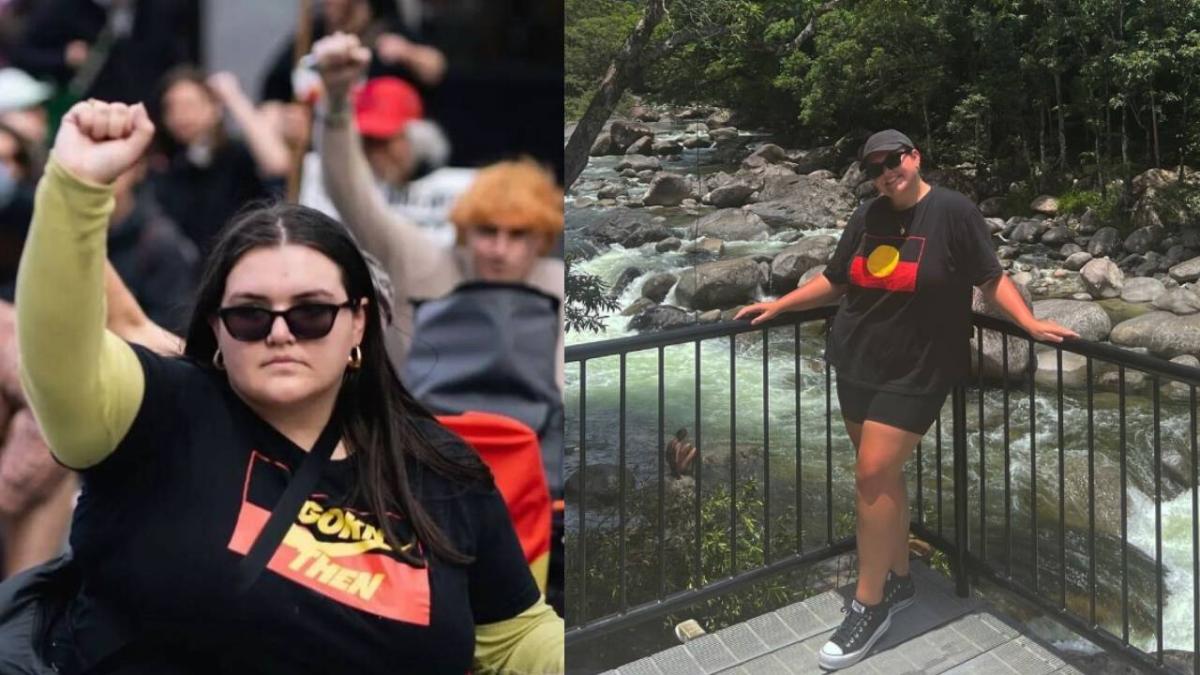
Growing up as an Aboriginal person in regional New South Wales, I’ve always been around the Aboriginal flag. My earliest memory of the flag is at around four years old, getting a lunch box from my Aunty Megan at our local Koori run playgroup, which was bright yellow with the flag and the slogan “Black, Deadly and Ready for School”.
Throughout primary school and high school, it was usually only Aboriginal people who had items with our flag or cultural designs. These were shirts you usually got from working in a community organisation, attending your local NAIDOC — a targeted school or university program — back then we had very little, if any, Black businesses to buy shirts from. If you were out in public and saw one of these shirts, you knew instantly you were around other Blackfellas or at least a non-Indigenous person who worked closely with community. Since I was little, I would watch my Mum do “the nod” and have our family receive “the nod” back — a small gesture as mob to say to each other “I see you, I’m here too”.
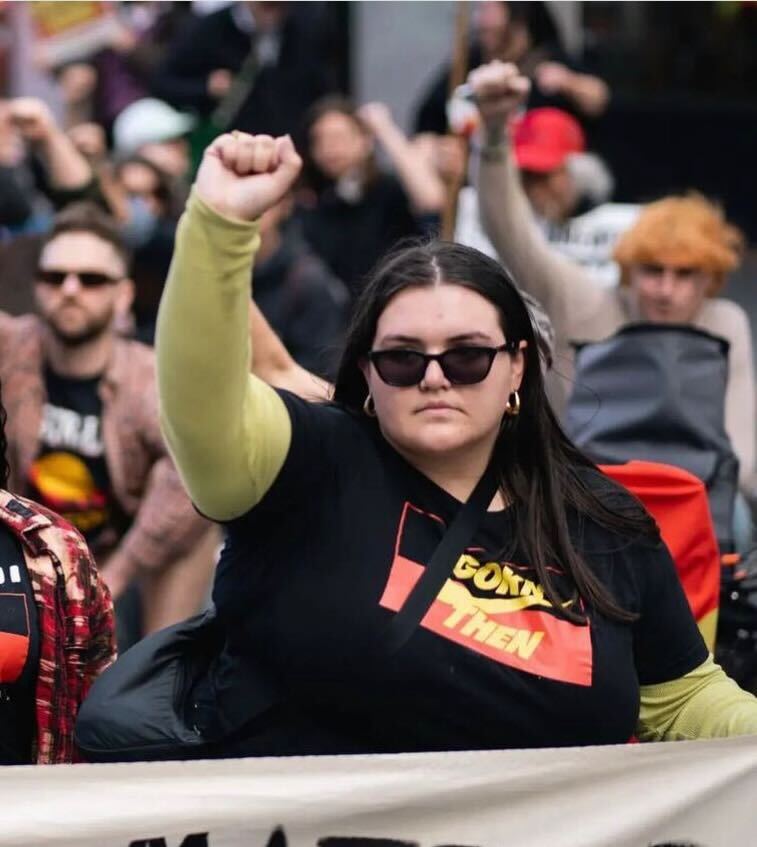
Of course, you emulate your parents and so I started doing “the nod” when I would see a shirt or a keychain with our flag or designs. I remember getting offended once when I was 18 when I did “the nod” at (what I assumed) was a sister girl and she didn’t do it back. I walked up to ask where her mob was from, ready to tell her what mine are, when she looked at me with wide eyes and then told me she was white.
Since then, this has become a regular occurrence. Through the global Black Lives Matter movement, the boom of Black businesses and increasing awareness of First Nations people and politics, the landscape of allyship has shifted and a question I get asked often is: “Is it okay for non-Indigenous people to wear a flag t-shirt?”
Now, like any question concerning mob, there isn’t a cut and dry answer. We must always acknowledge the diversity between over 500 nations across the continent, who all have different histories and relationships to colonisation.
“Harold Thomas tells us that the colours of the flag represent the Aboriginal peoples and our deep spiritual connection to the land. Since I was born, I have been swaddled with two flags, none of which have blue or white. I’ve identified with the Aboriginal flag my entire life. It’s a part of me,” Gumbaynggirr, Gunggandji and South Sea Islander writer Lay Maloney told PEDESTRIAN.TV.
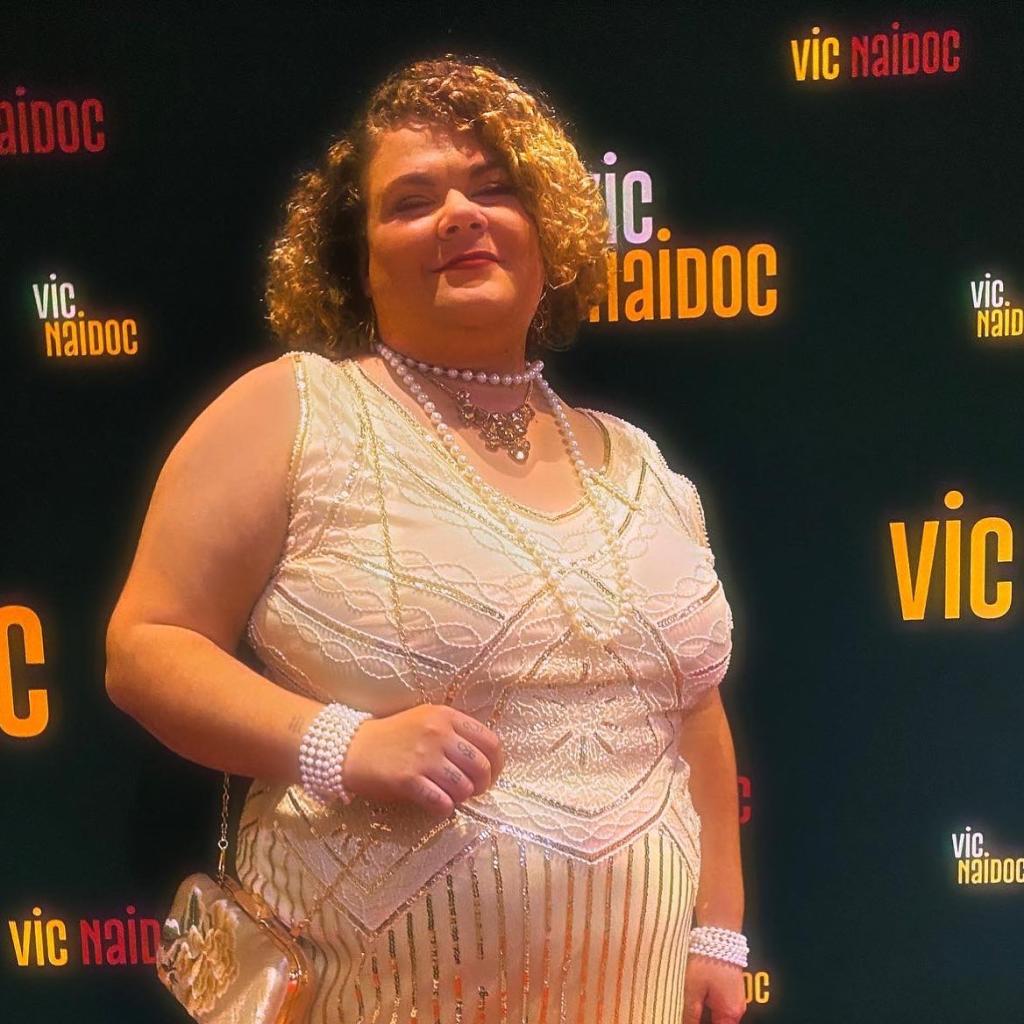
“I’ve fought with the principal to fly it on the flag pole. Looking at it reminds me of all the blood in my veins that dyed this continent red. Muma and my siblings dolled me up in those itchy, tri-coloured yarn clothes. Nan covered me and my cousins in a big black, red, and yellow blanket she knitted when we all fell asleep on the couch. My cousins have been buried wrapped in it. I’ve etched it into the concrete covering my Country. It has been my shield and spear when my Aboriginality has been under threat. It leaves me with no doubt of who I am.”
Lay also described how the flag isn’t just a cultural symbol and shared its importance to Aboriginal protest.
“I can never ever feel the same way about other flags than I do the Aboriginal flag,” they said.
“In its essence, it represents me and my people. When Aboriginal peoples fight, when we march, when we shout, when we mourn – it’s all done dressed in black, red, and yellow.”
For Jessica Johnson, a Warumungu/Wombaya woman and owner of Nungala Creative, she sees non-mob wearing Aboriginal designs as a sign of solidarity, although it’s not who she’s creating for.
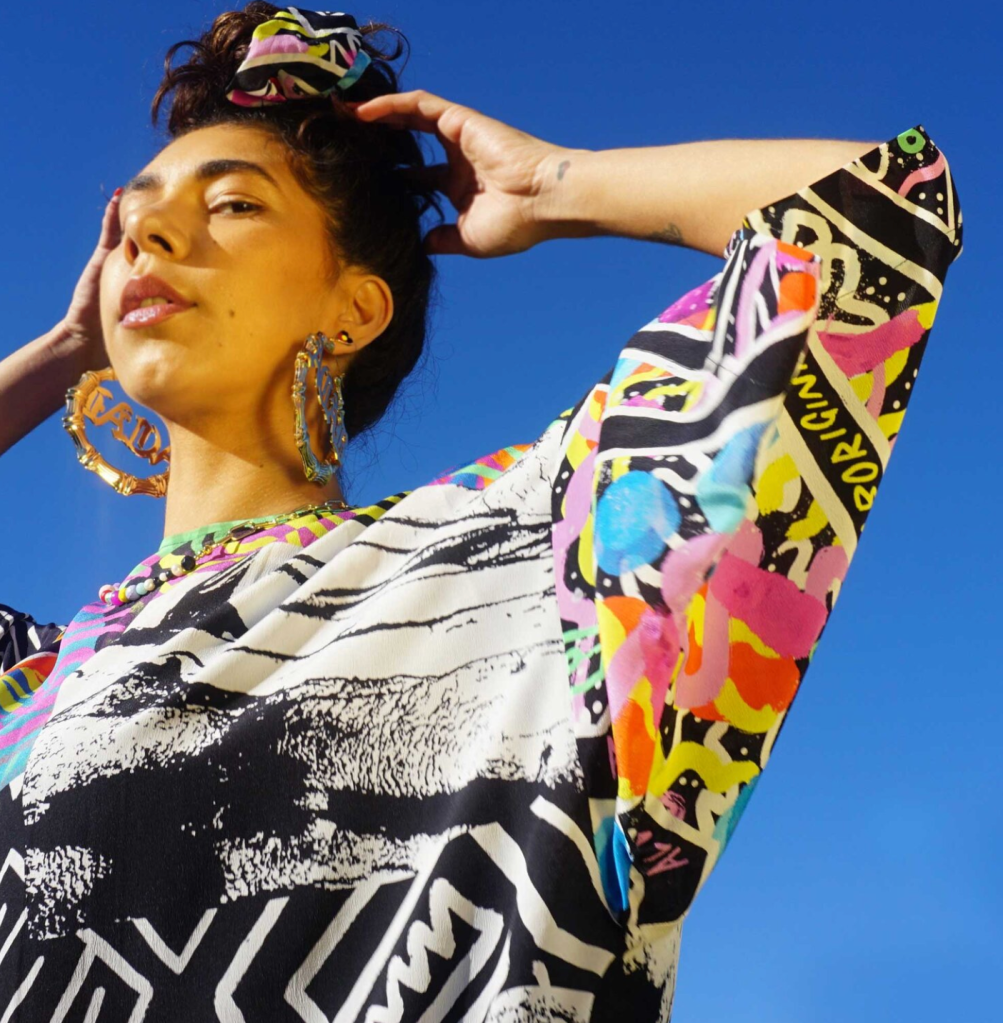
Reflections Runway Range by Nungala Creative.
She says that when she’s creating a design, she does so “with mob at the forefront of my mind,” particularly “young ones and our queer community.”
“I always say that my self-directed work is like therapy for me, to help manage the fuckery of this country,” she said.
“When mob wear my Nungala Creation designs like the Blak Heart, I see it as a declaration of self-love which is a powerful act of resistance.”
Is it okay for non-Indigenous people to wear an Aboriginal flag t-shirt?
When I reached out to Jessica, I mentioned that I was curious for her perspective because I had personally seen a lot of mob and non-mob wearing a number of her designs.
Jessica shared that, as the owner of Nungala, “when non-mob wear ally friendly gear, I see it as a sign of solidarity with our people. It’s a nice feeling knowing you’ve got people in your corner when you’re out and about in the world! We’re a big deal but we only make up a tiny percentage of the population of this country, so we need more than just us to get justice.”
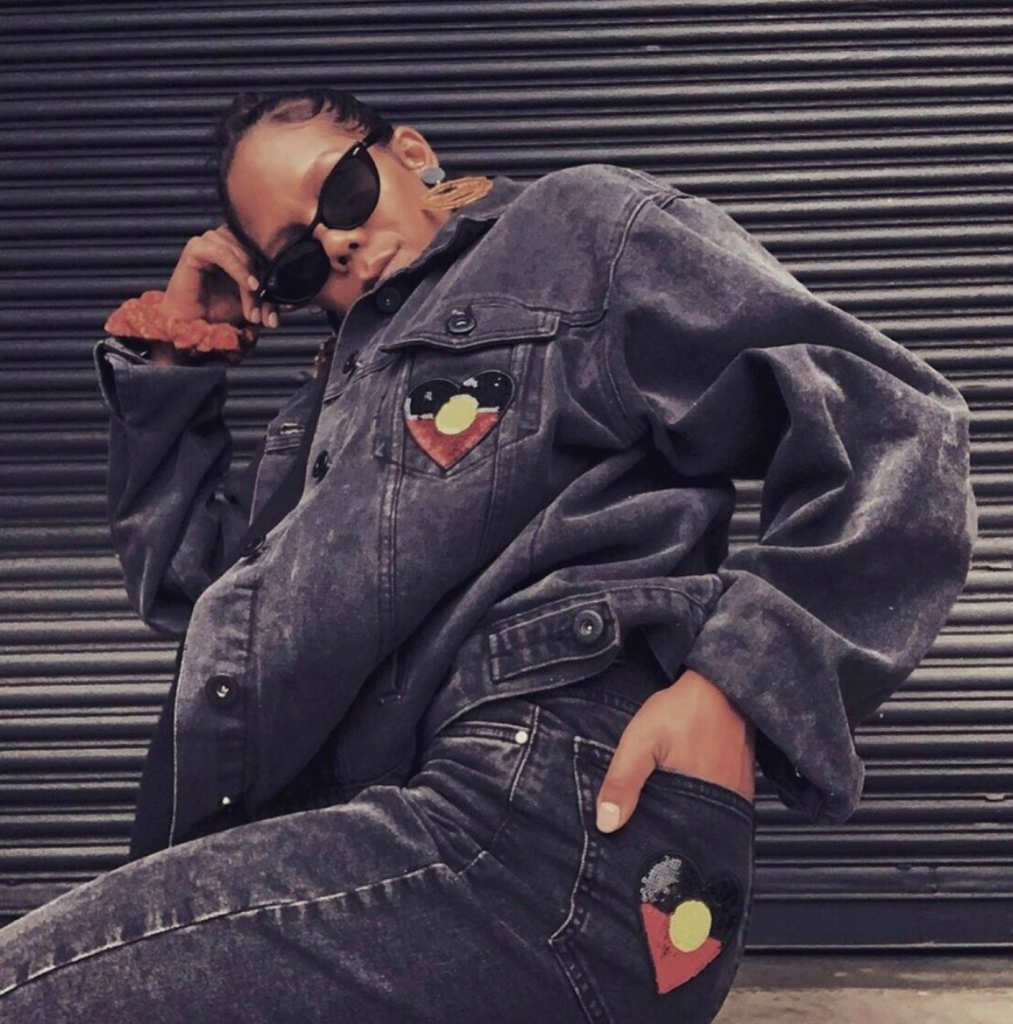
Iron-on patches by Nungala Creative.
“T-shirts are like our own personal billboards, injecting messages into the collective conscious. If you choose to wear a shirt that says you stand with mob and you are about it — then more power to you.”
However, Lay shared a commonly held reservation in our community that they do tend to feel “deeply suspicious” when non-mob wear our flag. Especially when we consider the inherent power dynamics at play with a dominant settler-colonial culture that is consistently violent and extractive towards Indigenous people.
“The settler-colonial narrative does not include us. We are erased and replaced. The settler adoption fantasies are so prevalent within this nation that it rouses a deep-seated suspicion every time I see non-Indigenous folks wearing the Aboriginal flag — my flag. I’ve seen a man tattooed head to toe in flags, including the Aboriginal flag and harass young Blackfullas,” they said.
“Soothing the suffering of the Blacks by buying a $50 t-shirt out of the price range of most Mob’s pockets doesn’t make you a hero, it doesn’t make you an ally either. I do not understand why non-Aboriginal people want to wear the Aboriginal flag beyond a reminder of their innocence or to ensure their futurity here.”
Although Jessica and Lay differ in how they feel about seeing non-mob wearing our flag, they share similar thoughts about the importance of settlers critically reflecting on their position in Australia.
Lay says non-Indigenous people must learn to “sit neck deep in discomfort” when reckoning with the impact of colonisation in Australia from deaths in custody, to water insecurity in Aboriginal communities, disruption to the natural landscape and the rising seas in the Torres Strait Islands.
They challenge settlers reflecting on whether to wear the flag to “consider giving without receiving.”
“Consider donations where you get nothing in return. Consider the fact pride cannot be purchased. Consider being creative. Consider wearing all black to signify mourning. Consider the irony of you — a settler — unsettling an Indigenous person by wearing their flag so casually. Consider showing up dressed in your own cultural wear to show solidarity. Consider educating yourself instead of asking Indigenous people to teach you.”
Jessica also reminded settlers to “make meaningful choices as a consumer. Know where your money’s going. Do your research, make sure you’re purchasing from [authentic First Nations businesses], and the money goes back to community. It’s not always easy but it’s worth the effort.”
She said you should know “the work doesn’t stop with a purchase or rocking the gear.”
“There’s so much that needs to change in this country, listen to community and show up. Don’t become complacent about our causes. We aren’t a passing fad or woke dinner conversation. We are the First People of this country and are still fighting for our rights, for our lives, for truth, for our babies and for our future. We are forever and any allyship should be too.”
What Aboriginal people, in all our diversity, are challenging non-Indigenous people to do is to actively make critical choices and to think beyond the simple action of purchasing a t-shirt. Flags, our cultural designs and our political slogans mean a lot to us and these aren’t things to be bought on a whim, used as fad or virtue signalling.
Some rules of thumb are:
- Most Black businesses will have labels of ally-friendly/Mob-only or you can ask.
- If you don’t understand the language on the shirt then it’s probably not for you.
- Educate yourself on a symbol or phrase if you’re going to wear it.
- Make sure you’re buying from an Indigenous-owned business, normally this would be stated somewhere. If it’s hard to find, it’s probably not Black-owned.
- Reflect on why you want to wear this item.
- Consider other ways you can support First Nations justice, it’s so much more than a shirt.
Phoebe McIlwraith is a Bundjalung Githabal and Worimi Saltwater writer, journalist and creative. She is a dubay/galbaan who uses she/her pronouns.
Unsure of what to do this Invasion Day? Here’s a bunch of ways you can support First Nations people — even if you can’t make it to a rally.



